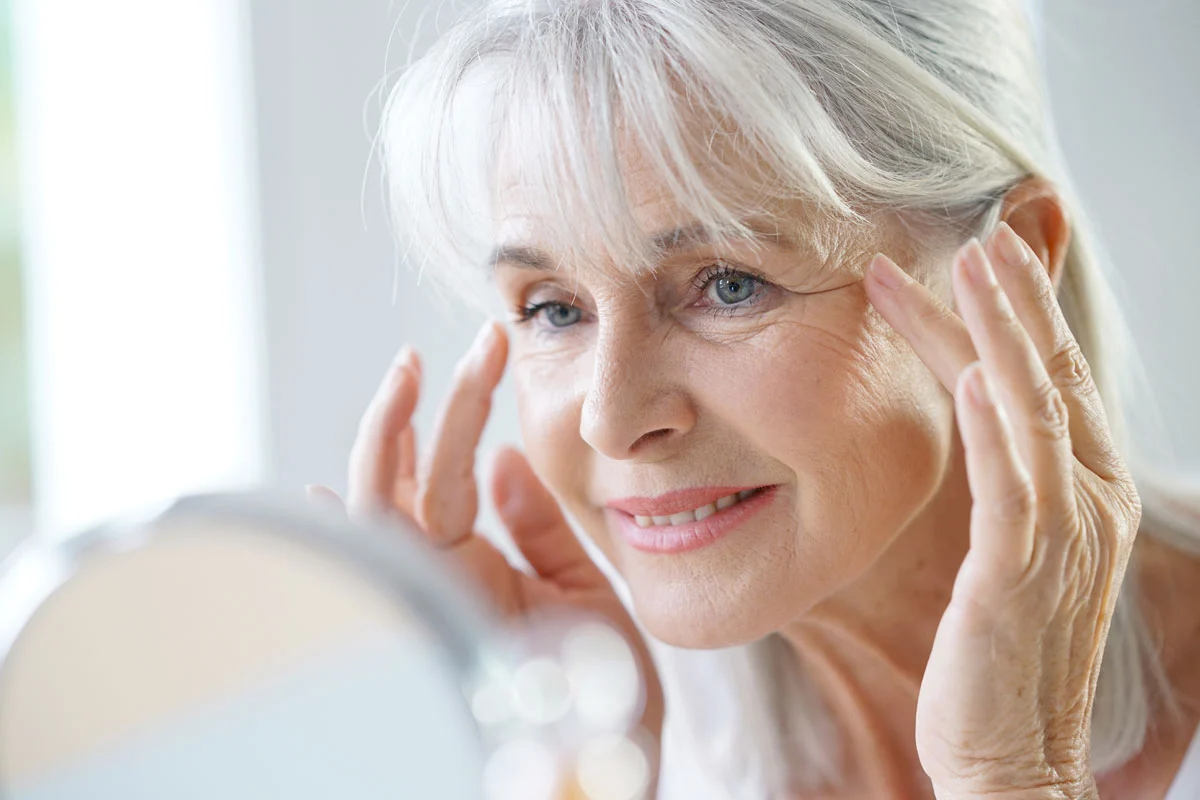Of all the old adages spoken throughout life, one of the truest among them might be “youth is wasted on the young.” As adults, we are reminded of that hard truth with every stiff and achy joint movement in the morning and every wrinkle we see in the bathroom mirror.
Article at a Glance:
Molecule of Youth
- Hyaluronic acid (HA) has been used to treat skin, eyes, and joints
- It has become exceedingly popular in cosmetics
- A small Japanese village has been studied for the population’s high HA intake
Magnesium and HA
- Studies show magnesium is essential for HA synthesis in the body
HA and You
- HA is found in your skin, the connective tissue of joints, and the eyes
- It is the skin’s natural moisturizer and a natural lubricant for joints
- Studies show HA aides in wrinkle management and joint comfort
No matter how active we remain in our later years, there are certain unavoidable bodily realities that inevitably appear as we grow older. The quality of our eyesight takes a dip, back pain is a daily occurrence, hair turns gray or falls out, skin grows looser and begins to sag—in short, gravity wins.
And one biological commonality in these age-related concerns (and more) is our body’s production of hyaluronic acid (HA), which begins to decline after the age of 40. While the name sounds like some sort of car exhaust byproduct, hyaluronic acid is basically a long polymer molecule—a long chain made up of thousands of sugar molecules. Also called hyaluronan, HA is a gooey, clear substance naturally occurring in cells throughout the human body.
Hyaluronic Acid: The Molecule Of Youth
Discovered in the 1930s before being used primarily in the treatment of skin lesions, hyaluronic acid eventually found its way into eye care procedures and joint rejuvenation injections in the 1980s. Then in the 1990s, HA found its way into the cosmetic field, becoming a highly sought-after ingredient for beauty products and a hot topic of discussion among fashion trendsetters.
But HA’s entrance into the public lexicon arguably began with a 2000 ABC news report about a Japanese village—a place that came to be known as “The Village of Long Life.” Yuzurihara, which sits less about two hours north of Tokyo, was one of 990 villages and towns surveyed by the World Health Organization, which found that there were 10 times more people living beyond the age of 85 in Yuzurihara than in North America.
The news report posits the theory that part of the reason for the longevity—along with the inhabitants’ smooth, wrinkle-free skin and dark, full heads of hair—is the population’s steady diet of soy plants and various potatoes and root vegetables. Dr. Toyosuki Kimori, a native of the village and the author behind a handful of books on HA, appeared in the news report and said that he believes those high amounts of magnesium help stimulate the body’s synthesis of HA.
The Epoch Times, a multi-language newspaper founded by Chinese-Americans, published an article on the “Yuzurihara diet” in 2011, in which Kimori’s points to the magnesium content as possibly playing a role, in addition to HA. The publication stated that “[The diet] is difficult to follow, even for Japanese. There is very little rice, as their mountainous area will not grow it. The diet consists mainly of starchy tubers—satsumaimo, a type of sweet potato; taro, a sticky white root; konnyaku, a gelatinous root vegetable; and tamaji, a small sweet potato. The diet also includes barley, vegetables, bean paste, fish and fermented soy. The diet is very high in fiber and low in iron. There doesn’t seem to be one outstanding source of HA. Since the root vegetables are full of magnesium needed for the synthesis of HA, Dr. Kimori speculated that the tubers play a major role in health and longevity.”
What is the Magnesium Connection To Hyaluronic Acid?
According to a review on HA by the International Journal of Research in Chemistry and Environment, magnesium is essential for hyaluronic acid synthesis and a lack of magnesium in the diet may be part of the cause of low hyaluronic acid levels. The journal seems to confirm Kimori’s dietary staples, stating that soy is rich in magnesium, as is spinach, green beans, broccoli, cauliflower, asparagus, potatoes, green lettuce and carrots.
Other sources in the scientific community also back up that claim that magnesium is needed for HA synthesis, while a lack of magnesium is one of the factors in some connective tissue disorders. The importance of magnesium in HA synthesis is no surprise, as the element is a crucial factor in a long list of bodily reactions and functions.
According to some analyses, there’s a good chance you aren’t getting enough magnesium. Data from the National Health and Nutrition Examination Survey from the last decade found that a majority of Americans of all ages ingest less magnesium than their respective estimated average requirement. Taking all this information into account, a magnesium deficiency could start a domino effect that leads to a hyaluronic acid shortfall.
How Does Hyaluronic Acid Work?
Indeed, HA serves a variety of roles in your body. Mainly found in the skin, the connective tissue of joints, and in the eyes, HA is your natural moisturizer, providing elasticity and flexibility, while helping your body retain collagen. HA’s moisturizing properties come from its hydrophilic—or water-loving—nature, which enables it to hold up to 1,000 times its weight in water, an important factor in tissue hydration.
Meanwhile, the elasticity and flexibility of HA stem from its viscoelastic character, which is a specific physical property that allows skin to “bounce back” from stretching or pinching. Roughly half of the hyaluronic acid in your body is present in your skin, where it binds to water to help retain moisture. In a 12-week double-blind clinical trial, 120 mg per day of HA, taken orally by a group of women and men, reduced wrinkles significantly when compared to a placebo. Skin luster and suppleness also improved.
In your joints, HA is makes for ideal lubrication. Hyaluronic acid is found in high quantities in synovial tissue, where it helps to lubricate and cushion your joints, allowing bones to glide against one another without growing brittle and causing discomfort. Studies have even linked HA with pain relief for people suffering from osteoarthritis, a degenerative condition caused by long-term wear-and-tear on the joints. HA is intrinsically important in your extracellular matrix (ECM), where its turnover rate is extremely high, being replaced every 12 hours to several days.
According to a study published in the Dermato-Endocrinology Journal, the most dramatic tissue-related change observed in aging skin and joints is the disappearance of epidermal HA. Basically, reduced hyaluronic acid means less lubrication in your joints and loss of skin elasticity. That translates to damage to cartilage and loose, wrinkled skin.
Roughly half of the hyaluronic acid in your body is present in your skin, where it binds to water to help retain moisture.
Aging Gracefully
There are plenty of positive sides of growing older. There’s the wisdom gained from years of experience, the total lack of pretense needed to survive socially, and maybe even a few grandchildren if you’re lucky. But hyaluronic acid takes the mindset of “aging gracefully” and applies it to physical health and appearance. After all, healthy joints make you feel young and healthy skin can help you look young. No wonder they call this amazing substance The Molecule of Youth.









